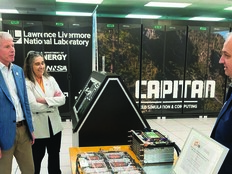“It sounds basic,” Miller said, “but if leaders can’t discover the talent they already have, we rebuild teams from scratch.”
Bharat Patel, product lead for Project Linchpin (the Army’s strategy to decouple AI from software through a standards-based approach and design principles), highlighted a model-exchange approach the Army has begun on classified networks with interagency partners and Amazon Web Services.
“Think of it like a marketplace where soldiers and data scientists can find vetted models, test them and reuse them across classification levels,” Patel said. The aim is to cut duplication and speed accreditation by promoting models that have already proved trustworthy.
DISCOVER: Are your AI services sustainable?
Reality Check From Industry: The Clock Is Ticking
From the industry side, Joe Markwith, CDW’s chief strategist for Mastering Operational AI Transformation, warned that commercial AI cycles are outpacing traditional government delivery timelines.
“Eighteen months is an eternity in AI,” he said. “The question is whether we can adapt at the velocity of change — at the edge, in wearables, in embedded systems — without breaking the mission.”
Markwith tied culture to credibility. “If we don’t design for the operator, people are going to reject our innovation,” he said. “Human factors, training and resilience have to land the same day the tech does.”
UP NEXT: Federal officials want AI in records classification.
Saling agreed that design and incentives matter as much as models. “We already have authorities to do things differently,” she said. “We need to exercise them — shorten the path from requirement to capability and let data owners and operators co-design the workflow.”
Asked how to measure progress, Miller offered a pragmatic yardstick: AI fades into the background when the plumbing is right. “When teams stop begging for basic application programming interfaces, when long-fielded systems expose the data they should have had 10 years ago, and when units pull these tools into the mission without us waving banners — that’s success,” he said.
Until then, he urged leaders to think less about pilots and more about platforms: shared-data services, standardized interfaces and deployment paths that compress the jump from lab to line. “If we invest in the common layers, those two near-term use cases — airspace management and decision support — move from demos to durable advantage,” Miller said.














